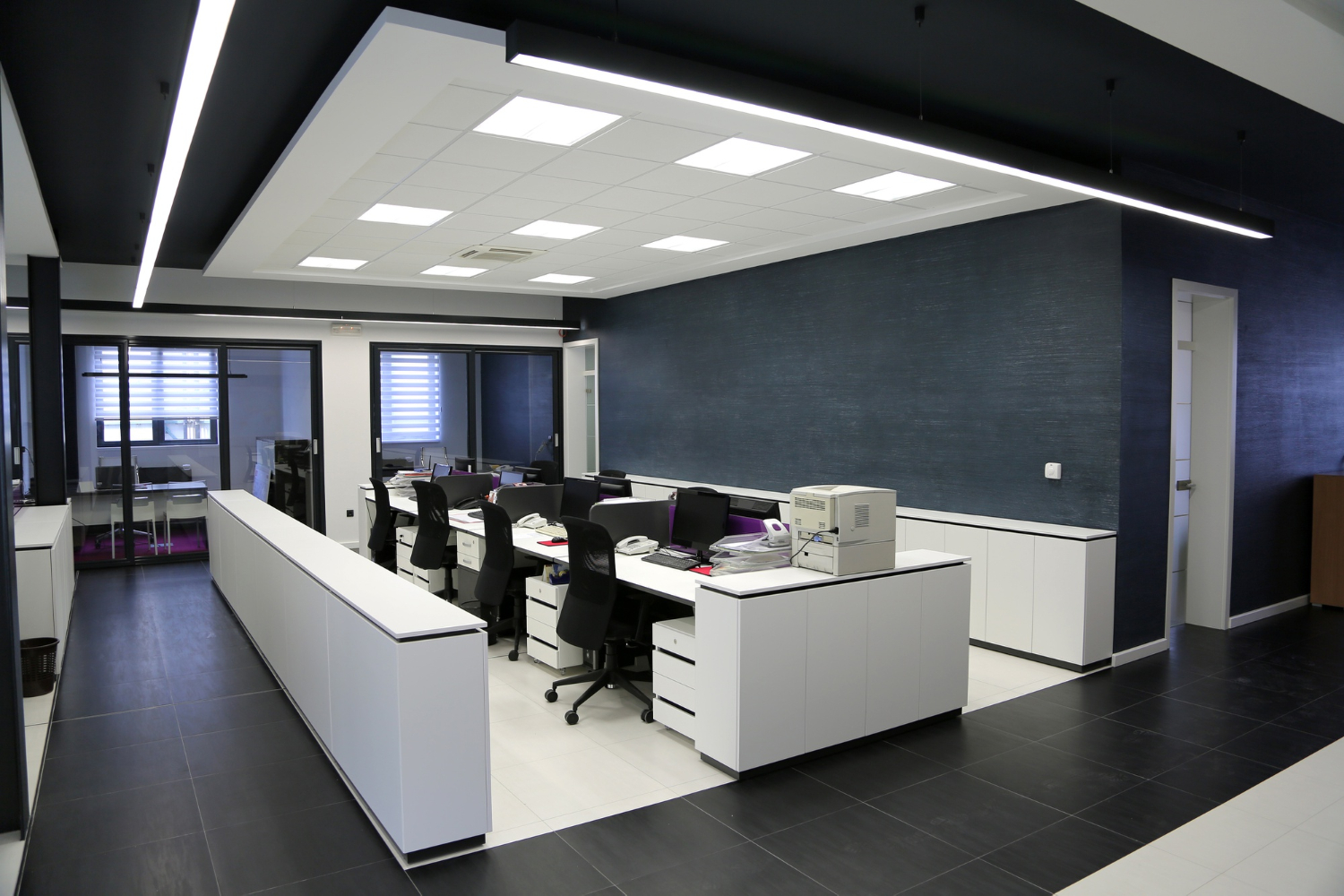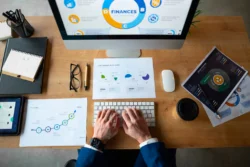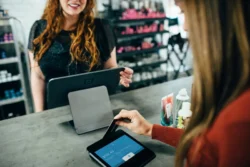The evolution of the modern office space has undergone a remarkable transformation in recent years. Gone are the days when offices were designed with a rigid, uniform structure, where rows of desks lined fluorescent-lit rooms and private offices were symbols of hierarchy. Today, businesses are recognizing the importance of creating flexible, inspiring work environments that cater to the diverse needs of employees while also reflecting the culture and values of the company. The shift is not only aesthetic but functional, as work models increasingly move towards hybrid and remote setups, drastically changing how and where employees work.
The need for adaptable spaces has come in response to a workforce that values autonomy, collaboration, and well-being over traditional metrics of productivity. With the rise of technology, employees are no longer restricted to a specific desk or even a specific location. Consequently, modern office spaces have evolved to prioritize comfort, flexibility, and design elements that enhance creativity and well-being.
The Rise of Flexible Workspaces
Flexibility has become a key focus in modern office design. With employees no longer bound to their desks from nine to five, office spaces must cater to a variety of working styles and preferences. Some employees thrive in open-plan areas where collaboration can happen naturally, while others need quiet spaces to concentrate. By incorporating elements such as hot-desking, breakout areas, and quiet zones, businesses can create a workspace that accommodates all preferences.
Flexible workspaces are also about the types of spaces provided. For example, many offices now feature breakout rooms designed to encourage relaxation or socializing, as well as “focus pods” where individuals can work without distraction. This kind of zoning is essential to create a balance between collaboration and individual productivity. For instance, Google’s office designs are renowned for their “micro-kitchens” where employees can gather for informal meetings or take a quick break without leaving the workspace.
Additionally, flexible workspaces incorporate adaptable furniture that can be reconfigured depending on the needs of the team. From adjustable desks to modular seating, these elements help create a more fluid work environment. Many companies also employ movable walls or retractable dividers, allowing rooms to be transformed based on the requirements of the day. This adaptability ensures that the office can grow and change along with the business, providing a dynamic and responsive workspace that can adapt to different projects, team sizes, and work modes.
Designing for Employee Well-Being
Employee well-being is another significant consideration in modern office design. Research has shown that a well-designed office can have a profound impact on productivity, morale, and even employee retention. Natural light, for example, has been proven to boost mood and energy levels, while access to greenery can reduce stress and enhance creativity. In fact, one study found that employees who worked in natural light were more likely to report higher levels of satisfaction, less fatigue, and better quality sleep.
Incorporating wellness spaces, such as relaxation rooms, fitness areas, or even mindfulness zones, is becoming more common in office design. These spaces provide employees with a place to recharge, helping them to maintain a healthy work-life balance. Some companies have even introduced on-site gyms, yoga rooms, or meditation spaces to help employees manage stress. Another popular feature is wellness-focused decor, such as biophilic design, which integrates natural elements like plants, water features, and organic materials to bring a touch of nature indoors.
The emphasis on well-being extends to ergonomic furniture and equipment, ensuring that employees are comfortable and supported throughout their workday. Ergonomically designed chairs, sit-stand desks, and screen adjusters can make a significant difference in reducing physical strain, especially for those working long hours. For instance, chairs that support the lower back and desks that adjust to different heights can help prevent back pain and improve posture. Investing in ergonomic solutions not only benefits employees’ health but also contributes to higher productivity and satisfaction, reducing absenteeism and turnover in the long term.
Technology Integration in Office Design
As technology continues to advance, its integration into office design has become essential. Smart offices, equipped with connected devices and automated systems, are becoming the norm. Technology integration isn’t limited to computers and projectors; it includes interconnected devices that streamline everyday functions. From controlling lighting and temperature with a smartphone to using virtual meeting rooms that connect remote and in-office employees seamlessly, technology is shaping the future of workspaces.
Virtual and augmented reality tools are also gaining traction in office design. For instance, VR meeting rooms allow remote employees to participate in a shared virtual space, enhancing engagement and reducing the sense of distance. Additionally, companies use AR for virtual tours or training sessions, creating immersive experiences that increase learning retention. These technologies not only improve the functionality of the workspace but also demonstrate a commitment to innovation and employee engagement.
The Internet of Things (IoT) allows businesses to collect data on how their spaces are being used, enabling more efficient resource management. For example, occupancy sensors can determine which areas of the office are underutilized, allowing for better space planning. This data-driven approach helps companies optimize their workspaces, ensuring they meet employees’ needs without wasting resources. Furthermore, IoT devices can monitor air quality, temperature, and lighting, adjusting them in real time to create an ideal working environment that enhances focus and comfort.
Sustainability in Office Design
Sustainability has become a key consideration in office design, with more companies seeking to reduce their environmental footprint. Green office initiatives, such as using energy-efficient lighting, reducing waste, and incorporating recycled materials, are becoming standard practices. Beyond the environmental benefits, sustainable office design can also enhance a company’s brand image, demonstrating a commitment to social responsibility.
Modern sustainable office designs often incorporate features like green roofs, solar panels, and eco-friendly HVAC systems to minimize energy consumption. Additionally, sustainable materials like bamboo flooring, recycled wood, and low-VOC paints are being used to reduce the environmental impact of office interiors. Not only does this align with the company’s eco-friendly goals, but it also resonates with employees who prioritize environmental stewardship.
Some companies are also adopting circular design principles, where office materials and furniture are chosen based on their recyclability and potential for reuse. This not only reduces waste but also encourages responsible resource consumption. By investing in sustainable design, businesses can lower operational costs and meet the growing demand from clients and employees for eco-friendly workspaces.
Incorporating Office Fit Outs
As businesses continue to evolve and seek ways to enhance their work environments, one approach is gaining traction: office fit outs. These tailored transformations enable companies to reimagine their workspaces to meet specific functional needs while reflecting their brand identity. Whether it’s updating an office to include more collaborative spaces, creating ergonomic workstations, or incorporating sustainability features, a professional office fit out ensures that businesses can adapt to the ever-changing demands of the modern workforce. Fit outs allow companies to maximize their space, integrate current trends, and address the unique needs of their industry, making it a powerful tool for creating workspaces that align with long-term business goals.
Future-Proofing Your Office Space
The future of office design will continue to be shaped by emerging trends and evolving technologies. As businesses adapt to the demands of a more flexible, technology-driven, and sustainability-conscious workforce, the role of the office will continue to change. With the rise of hybrid work models, the physical office space is increasingly seen as a hub for collaboration rather than a daily requirement. Many companies are therefore investing in co-working spaces and partnerships with remote work centers, allowing employees to work closer to home without sacrificing access to a professional environment.
Future-proofing an office requires an openness to change and a commitment to employee-centered design. Investing in thoughtful office design not only improves the work environment but also boosts employee satisfaction and productivity, making it a critical component of a successful business strategy.
Conclusion
In the ever-evolving business landscape, office design has moved beyond simply providing a place for employees to work. It has become a vital element in fostering creativity, collaboration, and well-being. By embracing trends like flexible workspaces, integrating technology, focusing on sustainability, and utilizing customized office fit outs, companies can create environments that not only support their business goals but also enhance the overall work experience for their employees. The modern office is no longer just a workspace; it’s a strategic asset that reflects the values, culture, and future-oriented vision of the organization.







